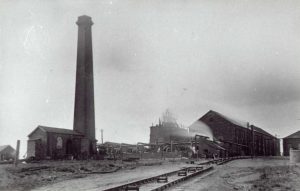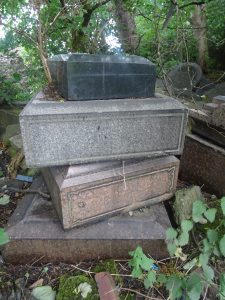Adventures in Coal
The booklet by Wakefield historian the late John Goodchild concentrates on the collieries owned and managed by Henry Briggs and his successors in the Whitwood and its surrounding areas of Castleford.
The notes are extracts relating to collieries in Methley abstracted from that publication.
Coal worked in the Whitwood and Methley areas required agreement from the landowners (mineral owners). In both cases this was the Earl of Mexborough who at the time resided at Methley Hall. Such arrangements provided the mineral owners with compensation (royalties) for the material extracted.
 The Briggs’ company purchased Methley Junction Colliery in 1866 which had been worked by the Burnley company and which had been under the management of Thomas Rayner son in law of the owners. The mines at Foxholes were released again following the death of Benjamin Burnley to Thomas Rayner and Wm Wood.
The Briggs’ company purchased Methley Junction Colliery in 1866 which had been worked by the Burnley company and which had been under the management of Thomas Rayner son in law of the owners. The mines at Foxholes were released again following the death of Benjamin Burnley to Thomas Rayner and Wm Wood.
Construction of the rows of terrace houses at Methley Junction commenced during the Burnley ownership and included completion of the primitive Methodist Chapel on vacant land there.
Henry Briggs its recorded, despite being a religious man (Unitarian) was affected by the rise of trade unionism within the ranks of colliers. His approach to disputation being at times quite radical. In 1862 he evicted 41 colliers and their families from their cottages along with other extreme actions relating to disputes in 1860.
Briggs was later to allow a letter which he had received during this time to be published. The contents of the letter threatened death to both himself and his son.
The deterioration in owner/workmen relations could have been a motivation to institute a revolutionary method of incorporation making the men shareholders in the company. The scheme was not universally accepted by all the men despite much promotion by the company.
However both mining operations and trade improved and dividends were welcomed. But the scheme became a victim of the economic depression of 1874 and profit sharing was abandoned in 1875.
Discipline was important to the safe working of the mines – in 1902 boys at both the Junction and Savile pits were prosecuted for riding horses underground. Workmen could be sacked for loss of tools or for involvement in delays to coal production.
Ill health to Henry Briggs in the years up to 1868 was to be noted in a let ter from his son Harry who wrote to his brother with the message that their father was seriously ill and that the loss of his false teeth during a recent long journey added greatly to his discomfort and his bad looks.
ter from his son Harry who wrote to his brother with the message that their father was seriously ill and that the loss of his false teeth during a recent long journey added greatly to his discomfort and his bad looks.
As directed in his will, he was buried in a freehold plot in Dundee (where he was staying) and that on his instruction no unnecessary expense nor any pompous display was to be applied following his death.
Expense and display was evident in the headstones in the churchyard of St Phillip’s church in Whitwood for his successors.
Little were they to know that their local church would be demolished and the headstones that had been laid as memorials to the late Briggs familia would be displaced and left in an unseemly pile adjacent to the building of the former vicarage.